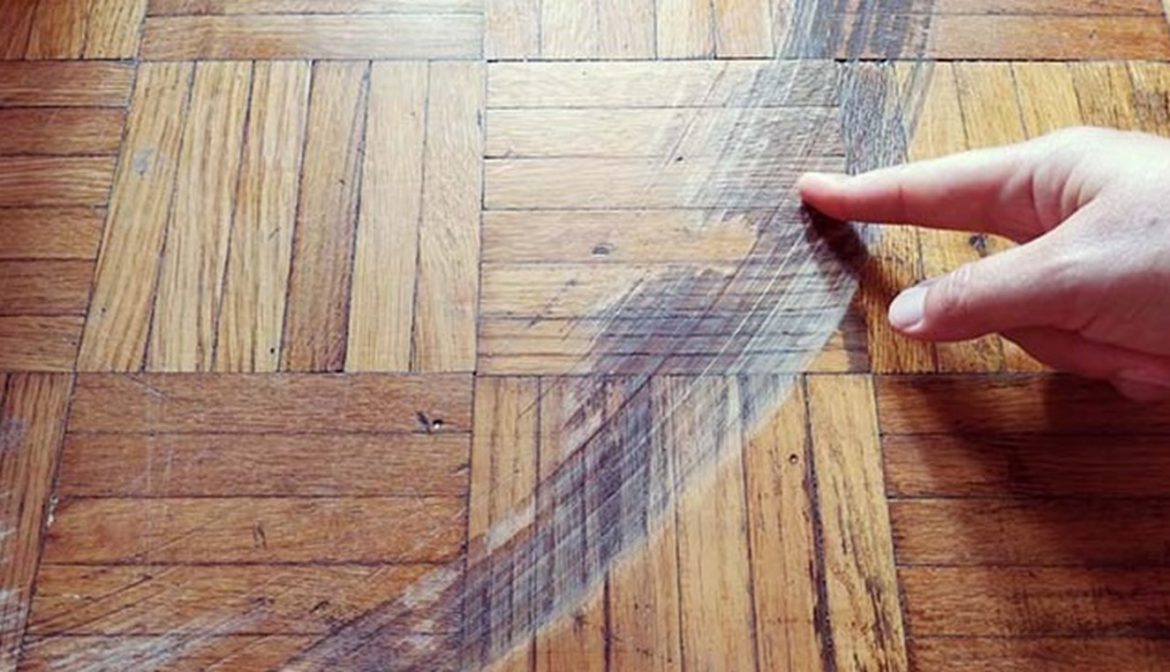You are going to get some small scratches or dents even with a strict cleaning and maintenance routine. Don’t let this put you off though. These small scratches and dents can actually add character, charm, and authenticity to your floor. The most important thing, however, is to make sure you don’t get any larger scratches that can be prevented. Here are some tips on how to keep your floor scratch-free.
After installing your hardwood floor of dreams and moving your furniture back in, you’re enjoying every moment of your newly restyled interior space. Then one day, while relaxing, you notice a scratch. Although it may not be a big deal, it stands out to you. What should you do?
Keeping Hardwood Flooring Scratch-Free
This old adage applies to your beautiful hardwood floors as well. It is important to put felt pads on the bottom of chairs and table legs to prevent furniture drag, so that they stay as smooth and shiny as they were the first day you installed them. The furniture should not be dragged across the floor, but carried, as dragging heavy objects across your hardwood floor can lead to scratches.
If you plan on walking on hardwood floors, avoid spiky shoes. Stilettos and cleats can dig deep into the wood and cause deep scratches and gouges that can only be repaired by replacing the damaged floorboards. Sand and rocks, despite their small size, can cause deep scratches on hardwood floors. If you put door mats in your entryways, these items won’t get tracked onto your hardwood floor and cause damage.
What you need to know about keeping a floor scratch-free
Keeping a regular cleaning routine is the best and most important thing you can do. We recommend you sweep your floor once a day with a soft brush, then once a week with a pH-neutral cleaner and microfibre mop. Keeping your floor clean will prevent dust and dirt from building up, which can cause dents and scratches if walked on. Our recommendation is a good Wooden Floor Spray Mop.
As a second step, you should protect your floor from moving furniture. Felt protector pads can be applied to the bottom of furniture that frequently moves (e.g. dining chairs). These pads will provide a soft cushion between your wooden floor and the chair leg. Make sure that you lift the furniture gently, then place it on the floor gently, rather than dragging it around. If you move furniture less frequently, you just need to be careful.
Additionally, doormats should be used at all entrance doors to catch dirt or grit that lands on them. You will not have to clean them as often and your floors will be protected!
Last but not least, you should remove all outdoor footwear before walking on your wooden floor. This includes dirty boots, football boots, and stiletto heels. These will cause dents and scratches to your floor. It is recommended that you wear slippers or soft indoor shoes instead.
How to take care of scratches on hardwood floors
To begin with, determine what kind of scratching your hardwood floor has. Pre-finished hardwood care kits usually include wax sticks to repair minor scratches caused by pets or footwear dragging on the surface. You can also repair minor scratches by using a Q-tip to apply a matching finish – but do so carefully as too much may make your repair obvious. Keeping your hardwood floors smooth and free of bumps and ridges is crucial.
A professional floor care expert should and must handle deeper, larger scratches, such as those caused by moving heavy furniture (refrigerators, consoles, etc.). There are some times when surface refinishing will not work, and you will have no choice but to replace the damaged board. This is why you should always have spare boards on hand.
Don’t step on your engineered or hardwood floor without taking off your outdoor shoes. Store wet or dirty shoes on a porch or cupboard away from wooden floors. You should also avoid walking on your hardwood floor with spiky shoes such as golf boots, football boots, or stiletto heels as these will cause deep scratches.
You can reduce the risk of scratches by cleaning your floors to remove dirt and debris. To prevent warping, make sure you remove excess water when mopping your floor. If you use a soft brush to sweep your floor, or if you buy a vacuum cleaner that is suitable for hardwood floors, use one of those.
Repairing Scratches on Wood-Effect Laminate & Brecon Flooring
In addition to their durability, ease of care, and ability to look like real wood, laminate, and Brecon flooring are popular flooring options for high-traffic areas (read about the differences between laminate and Brecon (Stratex) flooring in our blog). Ideally, you should try to protect laminate and Brecon flooring as much as possible in the first place, since you cannot refinish or sand them.
When laminate or Brecon floors are lightly scratched, they can be hidden with touch-up pens, crayons, or wax filler sticks that build up the color until they match your flooring’s color. In the event of deeper scratches or extensive damage, planks will need to be replaced.


